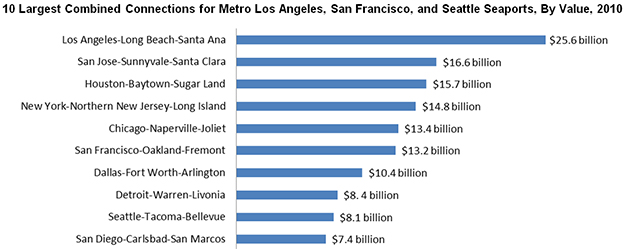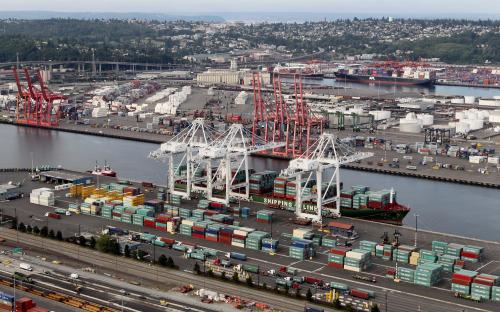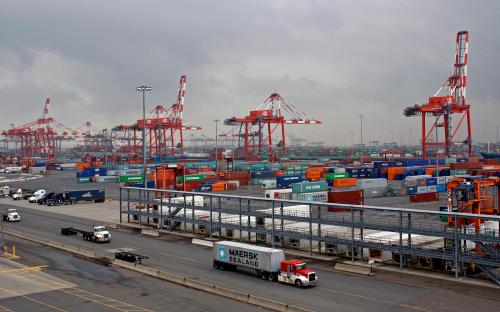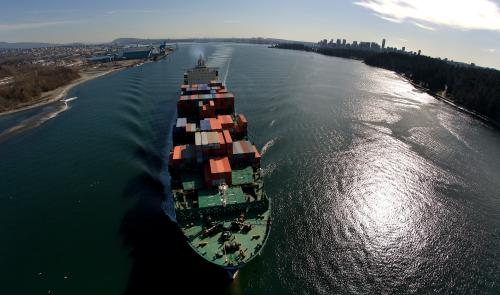As a contract dispute between dockworkers and shipping companies at 29 West Coast ports continues—and a backlog of cargo piles up—economic costs are mounting across the country. From terminal facilities in Long Beach and Los Angeles to Oakland and Seattle, the six-month-long negotiations between the International Longshore and Warehouse Union (ILWU) and the Pacific Maritime Association (PMA) have not only delayed thousands of trucks and prompted railroads to reroute shipments, but they have also stalled output for many retailers and manufacturers.
In the short term, congestion at these ports remains a thorny issue. A potential five-day work stoppage could reduce U.S. GDP by almost $2 billion a day and disrupt up to 73,000 jobs. However, the long-lasting effects may prove even more damaging to metropolitan areas across the country, especially as they look to boost trade in years to come.
After all, most of the $3 trillion of international goods traded annually are concentrated in the country’s 100 largest metro areas, including many of the highly valuable electronics, precision instruments, and other advanced industrial products used by innovative firms. Exports and imports from East Asia are particularly important in this respect, including the exchange of $2.8 billion in electronics between Phoenix and China, $647 million in machinery between San Jose and South Korea, and $136 million in chemicals/plastics between San Diego and Japan.
The fact that these large metro areas also contain most of the country’s critical port facilities further emphasizes the need to resolve the West Coast strike sooner rather than later. As our Metro Freight series will highlight in an upcoming release, only handful of markets house the essential seaports, airports and land border crossings that funnel the vast majority of international trade. Significantly, three metro areas—Los Angeles, San Francisco, and Seattle—are mired at the center of the ongoing strike and rank among the country’s 10 biggest port complexes, transporting over one-third ($472 billion) of U.S. waterborne exports and imports .

Note: These three metro areas include the ports of Los Angeles, Long Beach, Oakland, Seattle and Tacoma.
Source: Brookings analysis of EDR freight data
While the seaports in each of these metro areas pump billions of dollars into their regional economies and support thousands of direct infrastructure jobs with competitive wages, their importance stretches far beyond local—or even state—boundaries. For example, among all the global goods passing through seaports in Los Angeles, San Francisco, and Seattle, $15.7 billion of these products are sourced in Houston, $14.8 billion in New York, and $13.4 billion in Chicago. Even Detroit is responsible for transporting over $8.4 billion through seaports in these three metros.
In this way, resolving the West Coast port strike extends far beyond the ILWU, PMA and their various constituencies. Metro areas throughout the country have a lot at stake as well, eager to see the standoff end and to continue trading the goods that power their economies.





Commentary
How the West Coast Port Strike Is Hurting Metro Trade
January 20, 2015